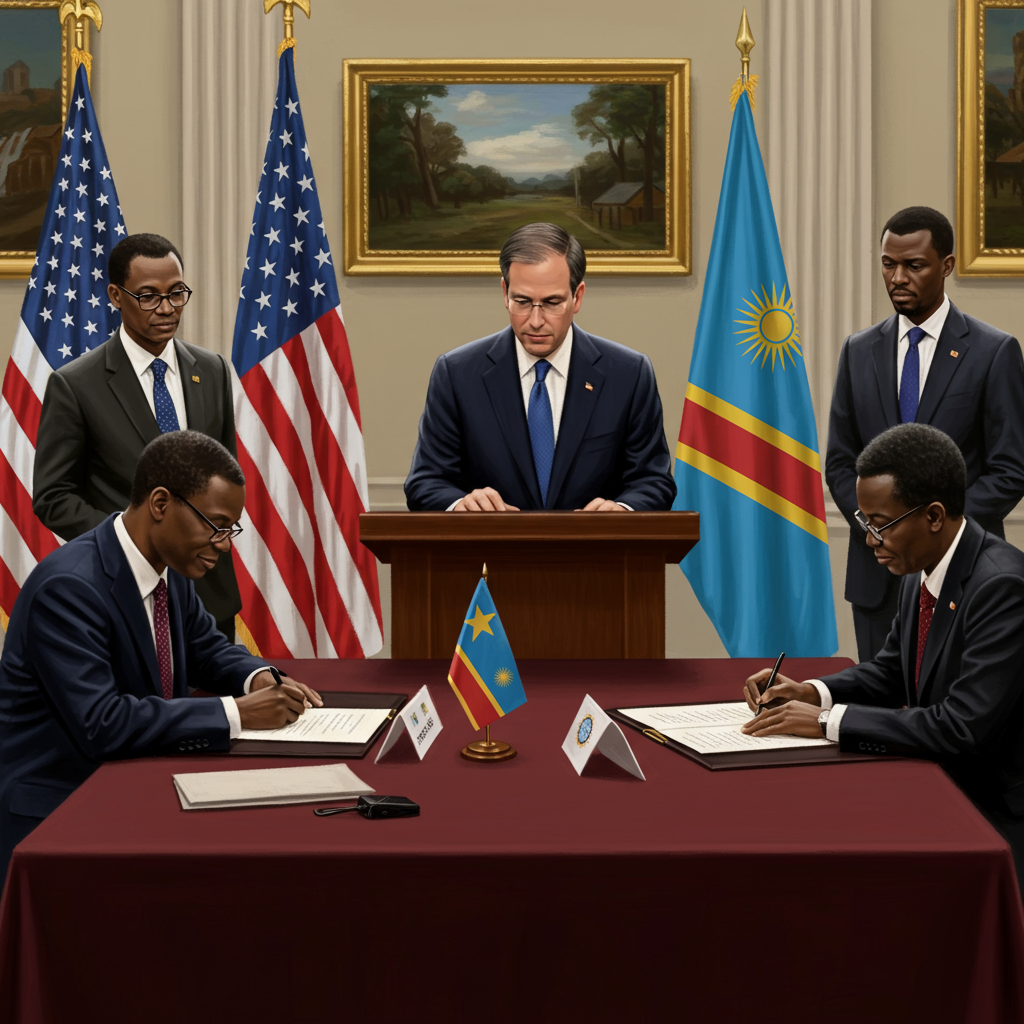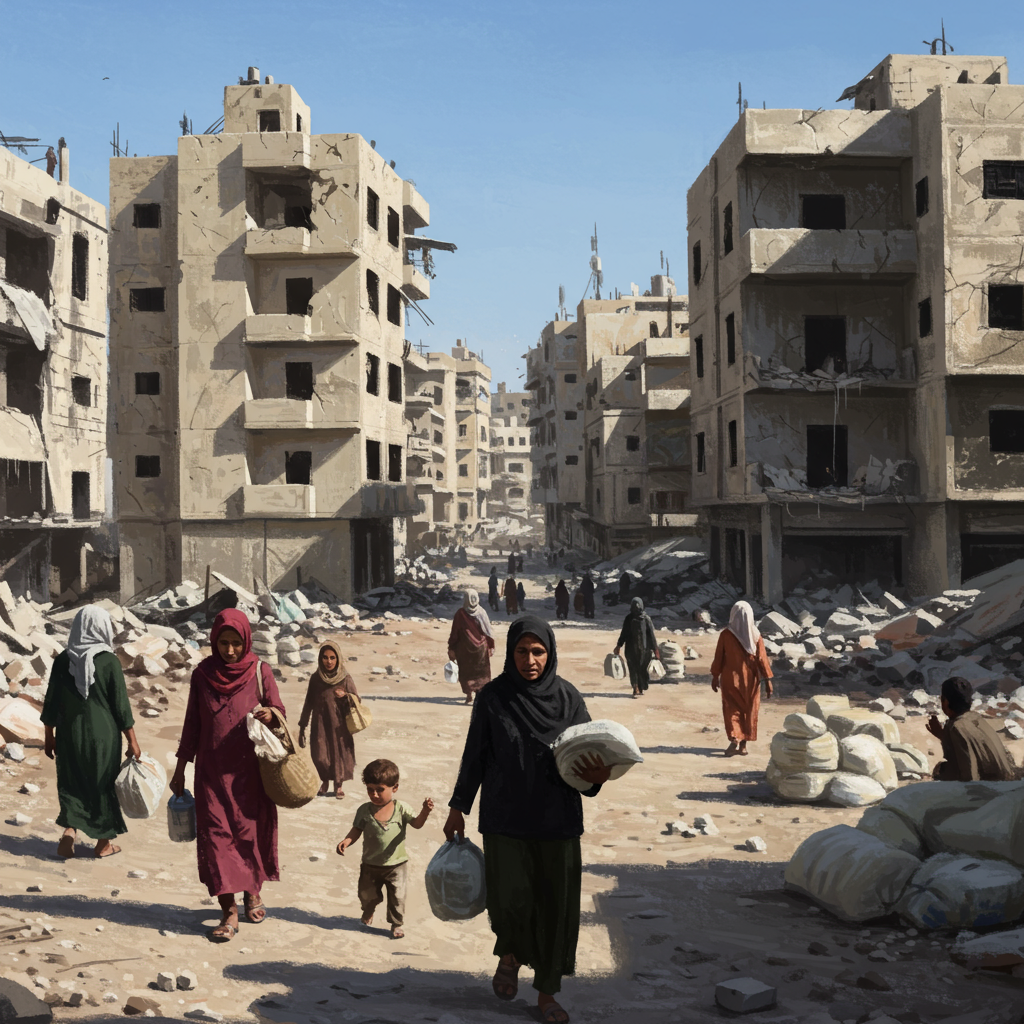Amidst intensifying military actions, israel has issued new evacuation orders for residents in parts of northern Gaza, instructing them to relocate south. This directive comes as US President Donald Trump renews public calls for a ceasefire agreement and the release of hostages held by hamas, highlighting ongoing, yet reportedly stalled, diplomatic efforts. The situation on the ground remains dire, marked by significant casualties and a worsening humanitarian crisis, raising concerns from international bodies and rights groups.
Escalation Forces New Displacements in Northern Gaza
Israeli military operations are escalating in northern Gaza, particularly focused on westward expansion within the region. As a result, Palestinian residents in multiple neighborhoods across both Gaza City and Jabalia have received orders to move south. The designated area for these evacuees is the coastal zone known as al-Mawasi, located near the city of Khan Younis in southern Gaza. According to Israel Defense Forces (IDF) spokesman Avichay Adraee, these actions are part of the military’s effort to “eliminate terrorists and terrorist infrastructure” in the north and enable forces to “operate more freely against militants” by clearing civilian populations southward. This marks the second time this year that many residents who had returned to northern Gaza during a previous ceasefire have been instructed to leave, prompting concerns from rights groups that such directed movements could constitute forcible transfer.
Heightened Military Activity and Civilian Toll
The intensification of Israeli military actions has coincided with a sharp increase in reported casualties. According to the Hamas-run health ministry, at least 86 people were killed across Gaza in the 24 hours leading up to midday on Sunday, with Gaza’s Hamas-run civil defence agency reporting at least 23 fatalities on Sunday alone. Another report cited 88 deaths in the 24 hours preceding Sunday. The ministry estimates the total Palestinian death toll in the conflict, which began on October 7, 2023, now exceeds 56,500, though it does not distinguish between civilians and combatants. Over half of the fatalities are reported to be women and children.
A particularly tragic incident involved a strike on a tent housing displaced people in al-Mawasi – an area previously designated as a “safe zone” and a destination for evacuees from the north. Five people were killed in this strike, including five members of the Maarouf family, three of whom were young children. The children’s parents stated they had followed Israeli instructions to evacuate to al-Mawasi a month prior and were bombed while sleeping on the ground. “We didn’t do anything wrong,” their mother, Iman Abu Maarouf, stated. “My children were killed, and the rest are in intensive care.” When asked about the strike, the IDF informed the BBC it could not provide a specific response without more information but asserted it “follows international law and takes feasible precautions to mitigate civilian harm.” Separately, a 20-year-old IDF soldier, Sergeant Yisrael Natan Rosenfeld, was killed during operations in northern Gaza.
Diplomatic Maneuvers and the Push for a Deal
The military escalation unfolds against a backdrop of renewed efforts to broker a ceasefire and secure the release of the roughly 50 hostages still held by Hamas, less than half of whom are believed to be alive. US President Donald Trump has been a vocal advocate for a resolution, publicly urging progress. On social media, he reiterated calls to “MAKE THE DEAL IN GAZA. GET THE HOSTAGES BACK!!!” Trump had previously expressed optimism on Friday, suggesting a potential ceasefire agreement could be reached within the following week and stating the US was “working on Gaza and trying to get it taken care of.”
Sticking Points Plague Negotiations
Mediator efforts, notably by Qatar, have reportedly intensified, but negotiations between Israel and Hamas remain stalled. A key obstacle appears to be a fundamental disagreement over the nature and scope of any potential truce. A senior Hamas official indicated that Israel, led by Prime Minister Benjamin Netanyahu, is obstructing progress by insisting on only a temporary agreement that would involve the release of a limited number of hostages, perhaps as few as 10. Hamas, conversely, maintains its position that it will only free all remaining hostages in exchange for a complete withdrawal of Israeli troops from Gaza and a permanent end to the 20-month-long conflict. Israel rejects these terms, demanding instead that Hamas surrender, disarm, and go into exile for the war to conclude. Netanyahu’s spokesperson countered that Hamas was the sole obstacle to ending the war, without specifically addressing the claim about limited hostage releases.
The renewed diplomatic push has included discussions of potential high-level visits. Israel’s Minister for Strategic Affairs, Ron Dermer, was reportedly scheduled for talks in Washington concerning a ceasefire, and plans were being made for Prime Minister Netanyahu himself to visit in the coming weeks. Qatari mediators reportedly hope that direct US pressure could help facilitate a breakthrough in the deadlocked talks.
Political Context and Wider Implications
Prime Minister Netanyahu has linked the ongoing situation in Gaza to recent regional developments, including a truce between Israel and Iran. During a visit to the Shin Bet security service, Netanyahu suggested that a recent “victory” over Iran opened up numerous possibilities, “first and foremost, to rescue the hostages.” He also reiterated Israel’s dual objective to “resolve the issue of Gaza, to defeat Hamas,” expressing confidence in achieving both missions. Beyond Gaza, Netanyahu noted that “broad regional opportunities are opening up” in which the security services play a significant role.
US President Trump has also weighed in on Israeli domestic politics, publicly criticizing the ongoing corruption trial against Netanyahu as a “political witch hunt.” Trump asserted that these legal proceedings should conclude, arguing they are delaying critical ceasefire negotiations and preventing Netanyahu from fully focusing on retrieving the hostages. This public intervention by a key international ally has been viewed by many in Israel as dramatic interference in the state’s independent legal processes. An Israeli court recently accepted a request to delay Netanyahu’s scheduled testimony in the trial for a week due to diplomatic and security considerations. Netanyahu was charged in 2019 with bribery, fraud, and breach of trust, all of which he denies. Israeli opposition leader Yair Lapid criticized Trump’s remarks, stating he should not “intervene in a legal process of an independent state.”
Humanitarian Crisis and Aid Distribution Challenges
The conflict has triggered a severe humanitarian crisis across the Gaza Strip. Widespread displacement has forced most of Gaza’s population to move multiple times, devastating urban areas and leaving residents heavily reliant on external aid. Israel had imposed a total blockade on humanitarian aid deliveries at the start of March but partially eased restrictions after 11 weeks following pressure from US allies and stark warnings from global experts about looming starvation. This easing included the establishment of the Gaza Humanitarian Foundation (GHF), a US and Israeli-backed aid group. Israel accused Hamas of stealing aid deliveries, an allegation denied by Hamas.
However, the GHF’s aid distribution system has faced significant criticism from UN agencies. Juliette Touma, communications director for the UN agency for Palestinian refugees (Unrwa), described the new mechanism as a “killing field,” asserting that orderly aid distribution could only be effectively managed through established UN and other humanitarian organizations. There have been repeated reports of Palestinians being killed or injured while attempting to access aid. The GHF boss, Johnnie Moore, did not deny deaths near aid sites but disputed claims that 100% of casualties were solely attributed to close proximity to GHF operations. A recent UN assessment highlighted the severity of the crisis, noting that fewer than half of Gaza’s hospitals remain even partially functional and over 4,000 children require urgent medical evacuation abroad. Egyptian Foreign Minister Badr Abdelatty, meeting with his Austrian counterpart, described the humanitarian situation as “unbearable,” stating, “It’s high time… to push for a ceasefire. It’s time for peace.”
Frequently Asked Questions
What is the current situation regarding evacuations in northern Gaza, and where are people being told to go?
Israel has ordered new evacuations in specific neighborhoods of Gaza City and Jabalia in northern Gaza. Residents are being directed to move south towards the coastal area known as al-Mawasi. This directive is part of an expanded Israeli military operation westward aimed at eliminating militants and enabling troops to operate more freely. Many people now ordered to leave had only recently returned to these northern areas after a previous ceasefire period.
What are the main obstacles to reaching a ceasefire deal between Israel and Hamas?
Negotiations for a ceasefire and hostage release remain stalled primarily due to fundamental disagreements on the terms. Hamas insists on a permanent end to the conflict, complete withdrawal of Israeli forces from Gaza, and the release of Palestinian prisoners in exchange for the remaining hostages. Israel, conversely, seeks a more temporary arrangement, reportedly involving the release of a limited number of hostages initially, and demands that Hamas surrender, disarm, and go into exile, terms Hamas refuses.
How is humanitarian aid being handled in Gaza, and what are the major concerns?
Humanitarian aid entry into Gaza remains restricted following a period of near-total blockade. While partially eased, aid is now also channeled through a US and Israeli-backed group, the Gaza Humanitarian Foundation (GHF). UN agencies have criticized this new system, calling it ineffective and dangerous, with reports of casualties near aid distribution points. They argue that only established humanitarian organizations like the UN can ensure safe and orderly aid delivery. Concerns about widespread starvation and the dire state of healthcare persist.
In summary, the situation in Gaza remains highly volatile, with simultaneous military escalation driving new displacement in the north and complex, stalled diplomatic efforts seeking a path towards a ceasefire and hostage release. The humanitarian crisis continues to deepen, while international political dynamics, including US involvement and Israeli domestic issues, add further layers of complexity to the ongoing conflict.


